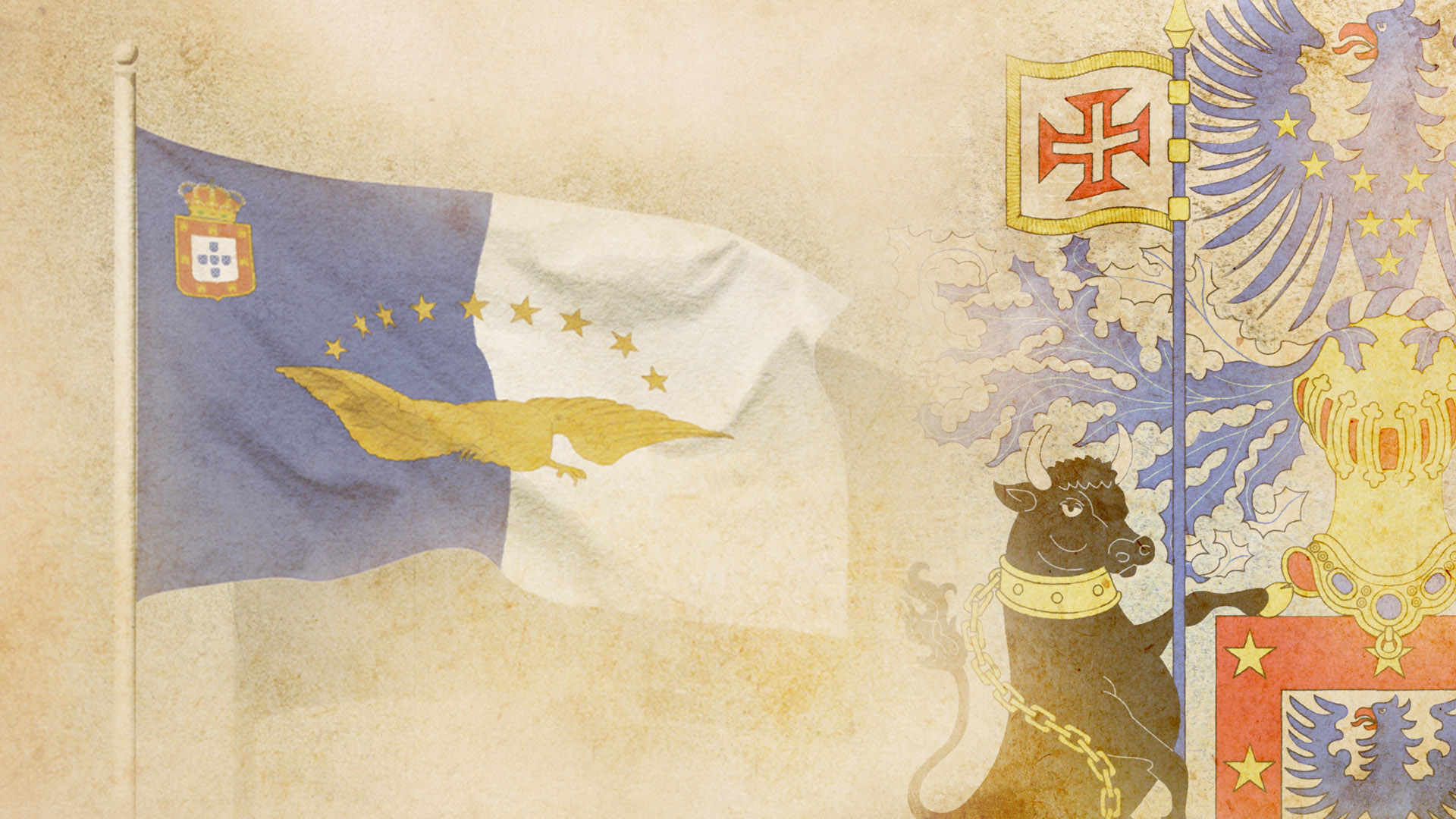The autonomy of the Azores archipelago, which became a reality with the administrative decentralisation from 1975 onwards, is the result of an evolutionary process of the Azoreans’ aspiration to govern themselves within the Portuguese state.
Since their discovery and settlement by navigators in the service of Prince Henry the Navigator, the Azores have enjoyed a certain degree of autonomy, thanks to their organisation into captaincies. Throughout Azorean history, it is possible to glimpse the local authorities’ aspirations to free themselves from centralist tutelage, including the resistance shown in the 1653 Courts to the appointment of a Captain-General for the archipelago, which came about in 1766 by the Marquis of Pombal.
The advent of the liberal regime, which was particularly well established from 1834 onwards, had positive consequences for the Azores archipelago, which had been one of the mainstays of this process. The Captain-General figure ceased to exist and, like any other part of the kingdom, the Azores were divided into three political and administrative centres, with the creation of the districts of Ponta Delgada, Angra, and Horta.
The aspirations for autonomy resurfaced in 1892, when Aristides Moreira da Mota, a deputy elected by the Regenerator Party for the Ponta Delgada district, presented the first draft of special legislation for the government of Azorean districts to the House of Representatives.
The autonomist movement that developed in the meantime led to the promulgation, by the government of Azorean Hintze Ribeiro, of a decree of special administrative organisation for the Azorean districts on 2nd March 1895, considered to be the first autonomous Azorean legislation.
In the aftermath of the First World War, with the subsequent social and economic crisis, enthusiasm for the autonomy issue was reborn, and in 1921, a new legislative proposal on Azorean autonomy was presented, replicating the one that had been submitted in 1892 – but, like the other, it was not followed up.
With the advent of the Estado Novo, hopes were raised for the creation of an Autonomous Province of the Azores, which would increase regionalist political governance. However, the opposite occurred – central power became more centralised and expectations were dashed.
Although the 1933 Constitution provided that the Azores and Madeira would have a special administrative regime, on 31st December 1940, the Statute of the Autonomous Districts of the Adjacent Islands was approved, which further strengthened administrative centralism, leaving no room for autonomist aspirations.
The Revolution of 25 April 1974 opened a new horizon for autonomous aspirations in the Azores archipelago. Shortly afterwards, a period of discussion began on the political-administrative model to be implemented. To this end, on 22nd August 1975, the Regional Council of the Azores was appointed, whose mission was to draw up a draft statute on autonomy and the administrative bodies of the Azores.
After the election of the Constituent Assembly, the preliminary draft of the Political-Administrative Statute of the Azores Autonomous Region was prepared, which was then transformed into the Provisional Statute of the Azores Autonomous Region, approved on 30th April 1976.
For the first time, the Portuguese Constitution recognized the specific political-administrative regime of the Azores and Madeira, based on the geographic, historical, economic, and cultural particularities of these territories. The constitutional, democratic, and political autonomy of the Azores archipelago was finally established.
The new regions now had a regional legislative assembly, elected by universal suffrage, and a regional government, politically accountable to it, co-existing with a minister of the Republic who was responsible for overseeing the constitutionality of the election and the acts of the regional government bodies.
The Azorean experience of autonomy began to take shape with the election of the first Regional Assembly on 27th June 1976, which took office on the following 21st July, resulting in the first Regional Government, sworn in on 8th September of the same year, headed by João Bosco Mota Amaral.
The new political-administrative regime’s main task was to draw up the proposals for the Political-Administrative Statute of the Autonomous Region of the Azores, which was approved by the Assembly of the Republic on 26th June 1980. Before that, however, the Regional Assembly had discussed and approved its symbols: the flag and anthem.
The Azores flag, with a blue and white background, alluding to the flag of the Portuguese liberal monarchy, underlines the first version of the “autonomy flag”, created at the end of the 19th century. The Portuguese coat-of-arms appears in the upper left-hand corner, with the flying Goshawk in the centre, above which the nine stars appear in a semi-circle, alluding to each of the islands in the archipelago.
The Azores Anthem was composed by Joaquim Lima, a philharmonic musician from Rabo de Peixe, composed during the autonomist campaigns of the 1890s, and the text was written by Natália Correia.
31st March 1892 – Legislative bill that advocated a new administration for the districts of the Azores;
19th February 1893 – Creation of the Autonomy Commission in Ponta Delgada
3rd February 1894 – The Autonomy Anthem, with lyrics by Antero de Quental, was performed in public for the first time;
2nd March 1895 – Promulgation of the first Azorean Autonomous legislation;
November 1897 – First Autonomous Flag;
17th October 1921 – Draft Law for the Administrative Autonomy of the Azorean Districts;
31st December 1940 – Approval of the Statute of the Autonomous Districts of the Adjacent Islands
22nd August 1975 – Creation of the Regional Council of the Azores;
30th April 1976 – Decree on the Provisional Statute of the Azores Autonomous Region;
27th June 1976 – First elections to the Regional Assembly of the Azores;
20th and 21st July 1976 – Preliminary session of the Regional Assembly of the Azores;
4th September 1976 – Solemn opening of the Regional Assembly;
8th September 1976 – Swearing-in of the 1st Regional Government of the Azores;
10th April 1979 – Approval of the Symbols of the Azores Autonomous Region;
26th June 1980 – Approval of the Political-Administrative Statute of the Azores Autonomous Region.
